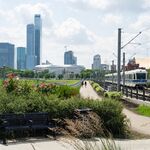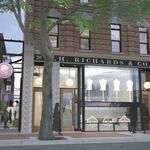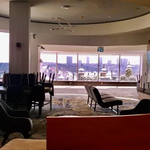Everyone is going to have a different way of dividing up the centre of the city and this is super subjective but for me it goes a bit like this:
These are the official boundaries of the Neighbourhood considered Downtown. I personally find it hard to consider anything west of 105th st truly downtown, and I think this is where the "too big" sentiment comes from.
I would cut this area up into a few different districts personally:
- The CBD with ICE District being sort of a sub district within it and being the core of Downtown plus The Arts District which are fully in located within downtown proper
and then a couple more areas which sort of straddle the line between Downtown and not downtown imo:
- MacEwen
- Warehouse District
- Capital / Leg District
I would draw the line of "Downtown" and "not Downtown" here personally:
Everyone is going to have a different definition but as of right now I would have it like this:
Everything that's on the Tablelands or right on the edge of them between 105th st to the West, 97th st to the East, 105th Ave to the North and 97th Ave to the south. Which coincidentally is 8 blocks north-south and east-west.
This is fluid however, and as the Warehouse District expands westward with projects like The Parks and the Warehouse District Park I think I would extend it maybe as far as 109th St. Once again this is just my opinion and I know everyone is going to think differently. I also struggle to draw a definitive line, which as some have pointed out leads to some people thinking downtown is bigger than it is, but I think is a good thing and adds a layer of complexity that's sorely lacking in much of the city.





